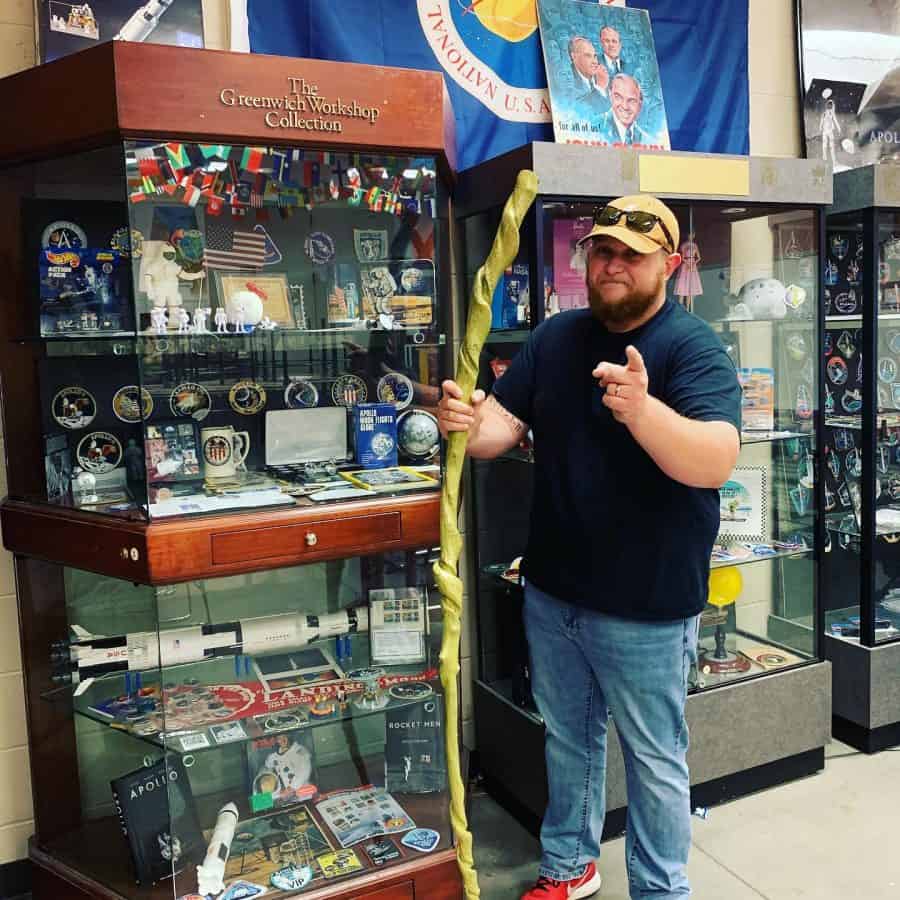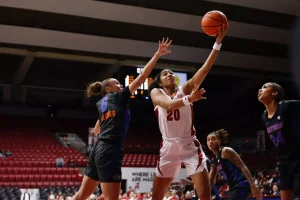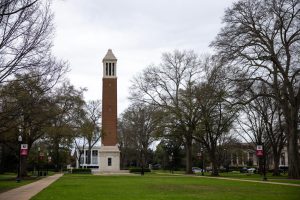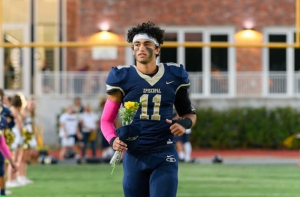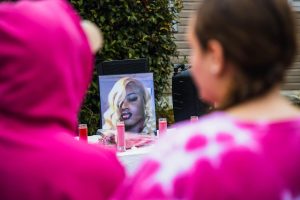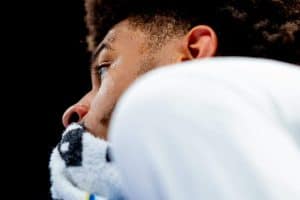UA Alum turns passion for space into a classroom museum
September 12, 2019
UA alumni and current teacher William Flowers launched a self-made museum about NASA and SpaceXploration to educate his students about space travel.
A classroom-converted museum ripe with information about NASA and SpaceXploration has launched at The Alberta School of Performing Arts. Its founder, William Flowers, a University of Alabama alumnus and seventh and eighth grade teacher at the school, wants to give students the opportunity to explore both the history and modern state of the space travel industry, something that he has always been passionate about.
“Space was one of those things that was always out there,” Flowers said. “I would always hear about the International Space Station and if you go out at a certain time, you could see it go across the sky. I thought it was so cool that, you know, there were people up there orbiting.”
As a teacher, Flowers wants to share his intrigue with his students. While the concept and passion originally stemmed from him, Flowers enlisted their help to research and assemble the display.
“I’m working with a couple of my seventh and eighth graders to curate this thing,” Flowers said. “I originally had information in the museum, but I thought it would be even better if the material was put together by the students. I just put the stuff in the room and the kids will actually do the research for it.”
He sees the museum as an opportunity to demonstrate the depth of space as well as show how space travel fits into the greater part of American history.
“There is so much that you can talk about in a classroom when you talk about space,” Flowers said. “You can talk about the civil rights movement because so many things that centered around civil rights also had to do with the Space Race. Civil rights, women’s rights, how women were treated differently at this time. With the Artemis missions, they are now going to be at the forefront of all of this.”
The main exhibit at the museum is dedicated to the Apollo missions. The display features a Topps trading card set dedicated to the missions, a NASA Distinguished Service Medal, original Apollo mission patches and the 45th and 50th anniversary patches, as well as press clippings from the Apollo era. In a 50th anniversary shrine, there is also the New York Times coverage of the missions and a small piece of the Apollo 11 command module that is kept in a glass case.
Other exhibits are dedicated to the Mercury, Gemini, STS and International Space Station missions, SpaceX and other miscellaneous space toys and informational material for the students’ use.
“When kids are actually able to hold historical items, it becomes a little more real,” Flowers said. “I can read about the Space Race all day long in a textbook, but when I’m given a primary source, like a newspaper or magazine article from that time and I can feel how worn the pages are, then it becomes real.”
Flowers isn’t the only museum curator in his family. His father built Edgar’s Closet, an Edgar Allen Poe museum in Tuscaloosa, that is recognized by the World Record Association as the World’s Smallest Museum.
“My goal is not to beat his record, but to have a cooler museum,” Flowers said.
The goal for the museum is to eventually to be recognized by the state of Alabama as an official museum. And while he’s aiming for the moon with his goals for the museum, Flowers even has bigger aspirations for him and his students.
“I would like the opportunity to work directly with NASA,” Flowers said.
NASA offers certain educational institutions and museums the ability to receive actual NASA items, like astronaut meals, for classroom use for the small price of shipping and handling.
“[This] brings it even more to life for the students,” Flowers said. “Just the fact that they can visualize it, they can see it, they can hold it, touch it – it means a lot more than a lecture would.”
Flowers began his journey to becoming a teacher at The University of Alabama, where a passion for interactive learning is shared by current students aspiring to fulfill the same role. Caroline Kent, a freshman majoring in elementary education, wants to foster an environment in her classroom where children see school as less of a chore and more of an enjoyable opportunity to learn new ideas and enrich themselves.
“I chose this major because it gives me the opportunity to set the bar for children’s individual success and instill a love for learning at a young age,” Kent said. “It should be fun to come to school and engaging for the student. Nobody can fully grasp a concept if it is only spoken to them, especially in an age where attention is easily lost.”
Becca Pahloski, a first-year graduate student studying human environmental sciences who majored in education during her undergrad years, cites the need for students to be taught beyond textbooks.
“I want to make learning accessible and exciting for all students,” Pahloski said. “I want to teach them beyond just the content; I just want to teach them to enjoy learning itself. I like to give my students a hands-on approach to learning. I feel that this helps my students internalize their learning and the real-world application helps build the relevancy of the content to them, which in turn increases student buy-in.”
Many students find traditional classroom learning challenging. It takes innovative minds like those of Flowers, Kent and Pahloski to be able to draw in that student who otherwise would struggle in a traditional educational setting.
“It’s important as a teacher to meet your students where they are and to do what works best for their learning,” Pahloski said. “It is important that we as educators include multiple points of access for our students by delivering instruction in a variety of ways.”



